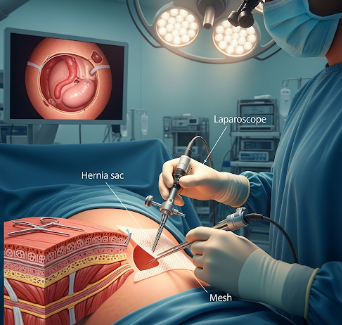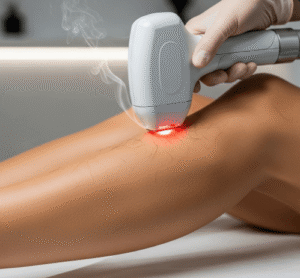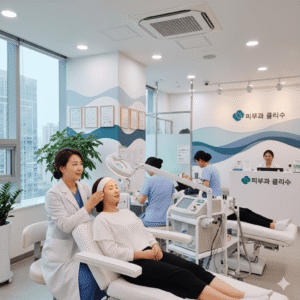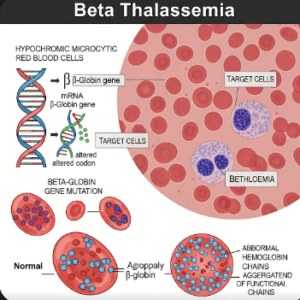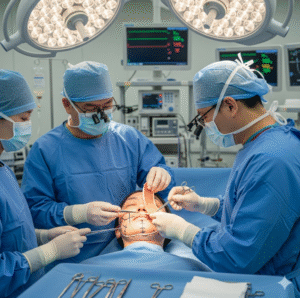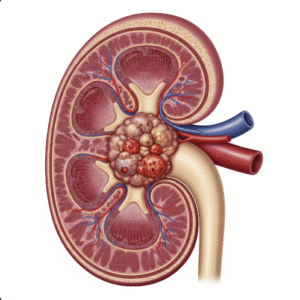Overview
Laparoscopic Inguinal Hernia Repair (TEP) is a minimally invasive surgical procedure used to repair inguinal hernias without entering the abdominal cavity. TEP stands for Totally Extraperitoneal Repair, which involves placing a mesh over the hernia defect to strengthen the abdominal wall and prevent recurrence.
In Korea, TEP is performed by highly skilled laparoscopic surgeons using advanced instruments and imaging guidance, ensuring minimal pain, quicker recovery, and excellent cosmetic results.
Highlights:
- ✅ Minimally invasive repair of inguinal hernias
- ✅ Reduces postoperative pain and recovery time
- ✅ Mesh placement prevents hernia recurrence
What is Laparoscopic Inguinal Hernia Repair (TEP)?
The TEP procedure involves creating a small space outside the peritoneum (lining of the abdominal cavity) and repairing the hernia with a synthetic mesh. Unlike traditional open surgery, TEP avoids entering the abdominal cavity, reducing risks of intra-abdominal complications.
Indications include:
- Symptomatic inguinal hernia (pain, bulge, or discomfort)
- Recurrent hernia after previous repair
- Bilateral hernias requiring minimally invasive repair
Important: TEP is preferred for patients who want faster recovery, less postoperative pain, and minimal scarring compared to open surgery.
What are the benefits?
- Minimally invasive: Small incisions, faster healing, and less scarring
- Reduced pain: Postoperative discomfort is generally lower than open surgery
- Quick return to activity: Patients often resume normal activities within a week
- Low recurrence rates: Mesh repair strengthens the abdominal wall
Key benefits highlighted:
- ⚡ Shorter hospital stay
- ⚡ Minimal disruption to daily life
- ⚡ Lower risk of surgical site infection
- ⚡ Suitable for bilateral or recurrent hernias
Procedure Details
1) How should I prepare for Laparoscopic Inguinal Hernia Repair (TEP)?
- Preoperative evaluation: Physical exam, blood tests, and imaging if necessary
- Medication review: Pause blood thinners or medications as instructed
- Fasting: Usually 6–8 hours before surgery
- Consent and education: Discuss procedure, risks, recovery, and mesh placement
- Lifestyle preparation: Avoid smoking; maintain proper nutrition for healing
2) What happens during Laparoscopic Inguinal Hernia Repair (TEP)?
- Anesthesia: General anesthesia administered
- Incision and port placement: 2–3 small incisions in the lower abdomen
- Creation of extraperitoneal space: Balloon or blunt dissection used to create working space outside the abdominal cavity
- Hernia reduction and mesh placement: Hernia sac reduced, and synthetic mesh positioned over defect
- Closure: Incisions closed with sutures or adhesive strips; no abdominal cavity entry
Duration: Typically 60–90 minutes depending on hernia size and complexity
3) What happens after Laparoscopic Inguinal Hernia Repair (TEP)?
- Recovery monitoring: Vital signs and incision sites observed in the hospital
- Pain management: Oral analgesics for mild discomfort
- Activity: Gradual return to normal activities; avoid heavy lifting for several weeks
- Follow-up care: Incision healing and hernia recurrence monitored
Highlights for post-procedure care:
- ⚡ Monitor for swelling, redness, or discharge at incision sites
- ⚡ Avoid strenuous activity or heavy lifting for 4–6 weeks
- ⚡ Mild discomfort or bruising may persist temporarily
- ⚡ Attend follow-up appointments to ensure proper mesh placement and healing
Risks / Benefits
Risks:
- Infection at incision sites
- Bleeding or hematoma
- Recurrence of hernia
- Rare injury to surrounding structures (blood vessels, nerves, bladder)
Benefits:
- Minimally invasive with faster recovery
- Reduced postoperative pain
- Lower recurrence rates compared to some open repairs
- Excellent cosmetic outcome
Recovery and Outlook
- Hospital stay: Usually 1 day; some cases outpatient
- Full recovery: 2–4 weeks for most patients; gradual return to full activity
- Long-term outlook: Very favorable with low recurrence and improved quality of life
- Follow-up: Physical examination and sometimes imaging to ensure proper healing
Tips for optimal recovery:
- ✅ Follow activity restrictions and lifting guidelines
- ✅ Maintain a healthy diet and hydration
- ✅ Monitor incision sites for infection or unusual symptoms
- ✅ Attend all postoperative follow-up visits
When To Call the Doctor
- Fever, chills, or signs of infection
- Increasing pain, swelling, or redness at incision site
- Bulge or discomfort indicating possible hernia recurrence
- Nausea, vomiting, or unusual symptoms post-surgery
Best Korea Option / Process
Korea provides advanced laparoscopic inguinal hernia repair care:
- Top hospitals: Specialized laparoscopic and hernia surgery centers
- Advanced diagnostics: Preoperative imaging and planning for precise repair
- Minimally invasive surgery: TEP approach for reduced pain and fast recovery
- Postoperative care: Pain management, activity guidance, and follow-up
- International patient support: Online consultations, appointment scheduling, and telemedicine follow-up
Step-by-step process in Korea:
- Online consultation and preoperative assessment
- Pre-surgery evaluation and fasting instructions
- Laparoscopic TEP procedure performed by expert surgeons
- Postoperative monitoring, pain control, and activity guidance
- Follow-up care to ensure healing, proper mesh placement, and low recurrence

